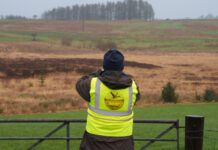
University of West London (UWL) researchers say they have developed pioneering techniques to map the architecture and mass density of tree roots within the soil to a high degree, all using ground penetrating radar technology, and without causing harm to the plants.
The seemingly innovative methodology developed at UWL’s Faringdon Centre – which carries out research into non-destructive testing methods – can also create 3D images of the interior of a trunk to track decay caused by disease over time without a need for harmful incisions.
The new methods are already being tested by councils and arboriculture organisations in what researchers hope will offer a way to monitor the spread of disease and prevent large numbers of potentially healthy plants being cut down before being sure of how they are affected.
The techniques could also boost public safety by highlighting trees at risk of falling in parks and open spaces due to internal defect and rot, even without any external signs of decay.
Professor Amir Alani, leader of UWL’s Faringdon Centre and Executive Dean of UWL’s School of Computing and Engineering, said:
“Trees in the UK and all over the world are under threat. They can look healthy on the outside but inside could be hollow and compromised with a danger of collapse, yet there is no other definitive and reliable way of knowing what is happening inside the trunk without making incisions which can cause lasting harm.
“This method allows us to map the health of trees in a completely non-destructive way, and estimate the mass density of roots which directly relates to the stability of a tree. This development is vital to the health monitoring of trees and can show us how any diseases may be spreading or decreasing over time.
“Not all defects and decays are the same of course, and so it is vital we need to work with grounds teams and experts who can use this data to find the best ways of protecting trees and preventing problems spreading.”
Developed and tested on trees in Ealing and Kensington, researchers are now working in collaboration with councils and arboriculture organisations in hope of transforming the way early symptoms of disease is diagnosed and managed.
The full research and methodology was published in the article: The Use of Ground Penetrating Radar and Microwave Tomography for the Detection of Decay and Cavities in Tree Trunks






